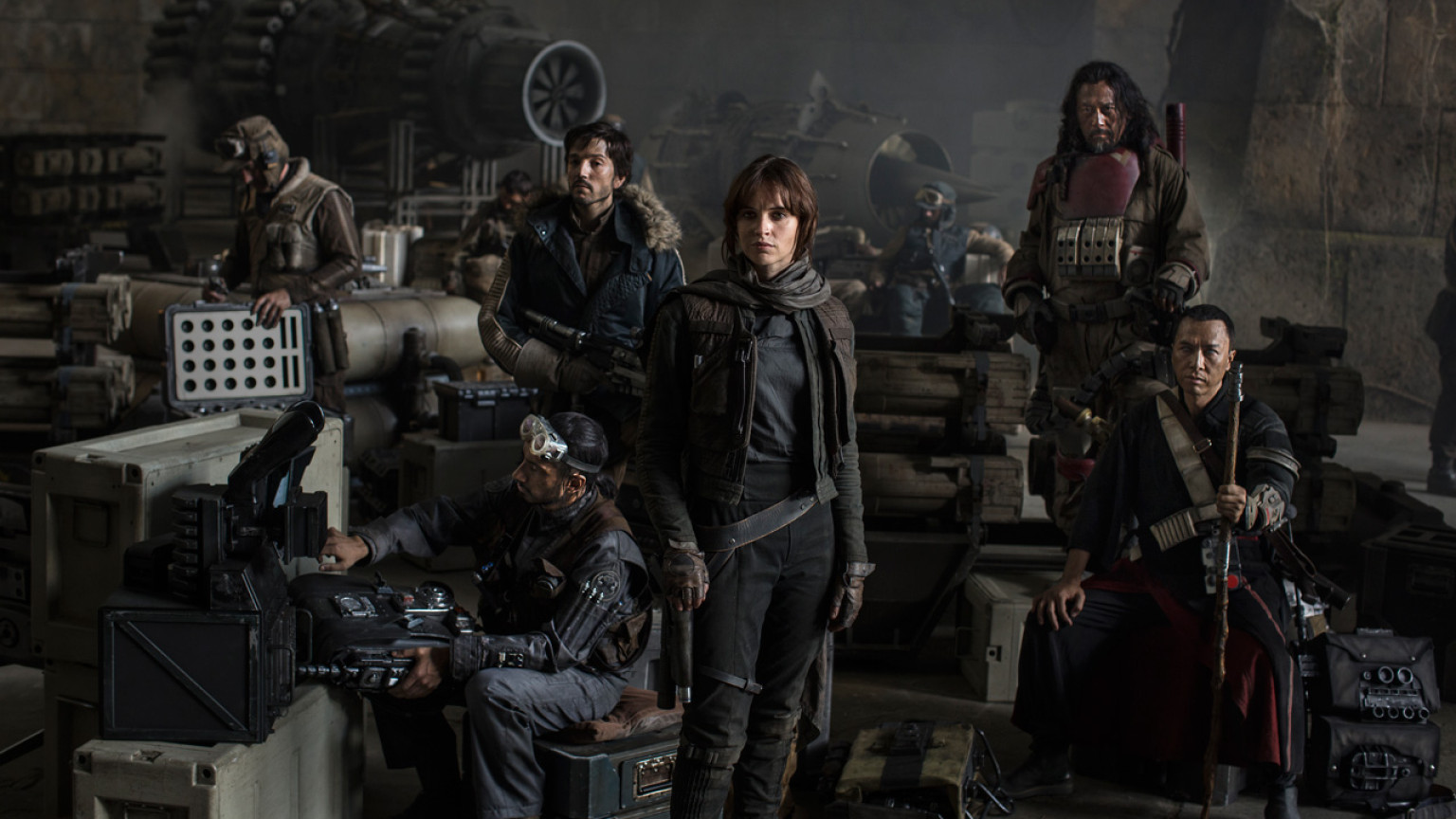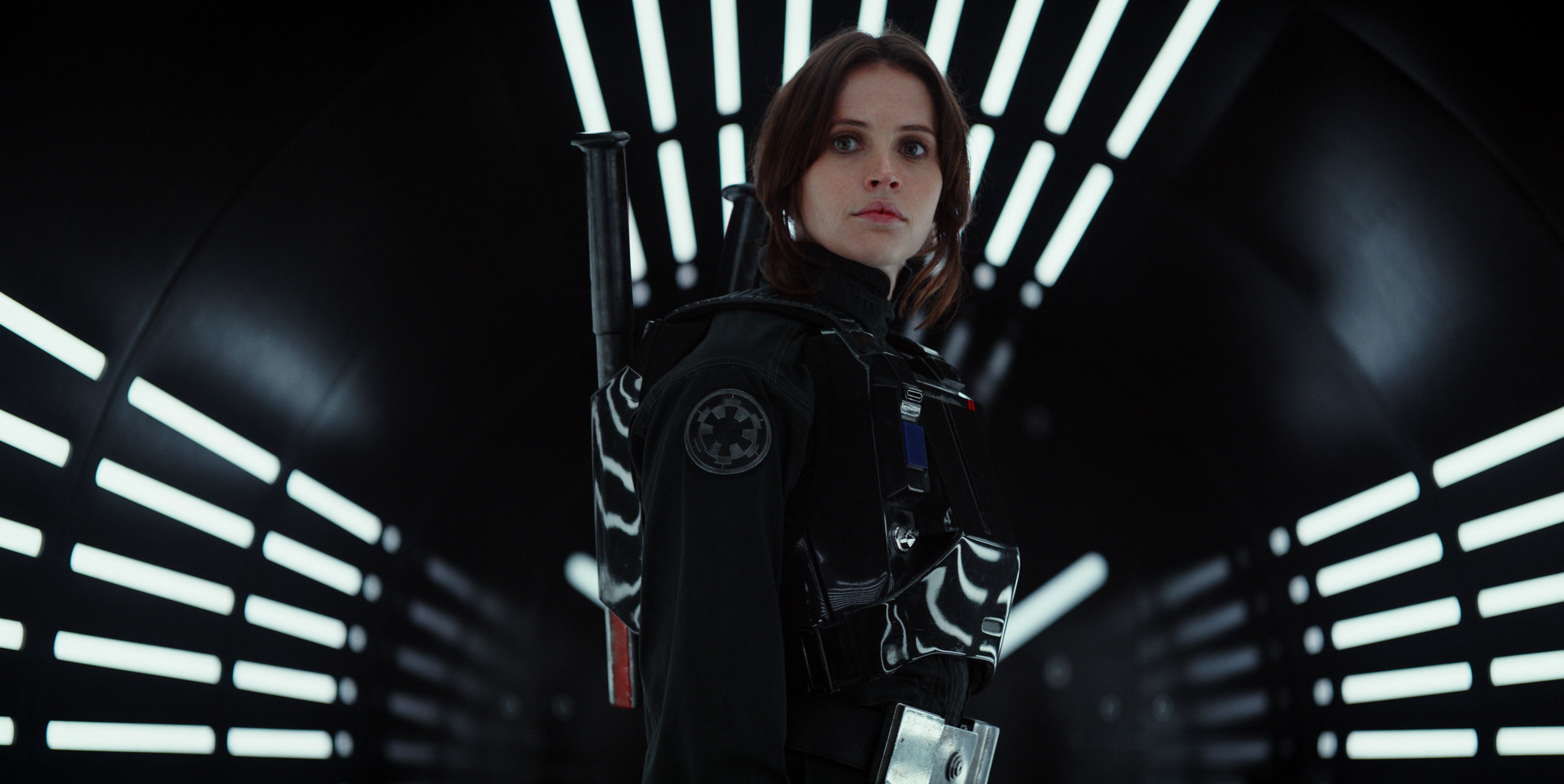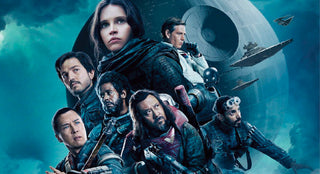“Okay, why was this movie made?” is not a question that I expected to ask after seeing a new Star Wars movie. As a fan of the series, I walked out of last year’s The Force Awakens on cloud nine, desperately searching for any and every bit of information I could on the next movie. Star Wars was back, and I could only thank The Walt Disney Company for bringing it back properly. I was mostly blinded by the fact that we live in a new age of movie franchises. Nothing is just a one and done, and no series is going to settle with a simple trilogy—everything needs to make money, and every piece of marketing needs to lead to another 2 hour movie. Serializing Star Wars into a yearly schedule had me weary at first, but I couldn’t help but be excited about the talent and the potential behind Original Trilogy side story Rogue One (which releases today). I was wrong.
The combined star power of director Garth Edwards (Godzilla) and the Star Wars universe seems like a no-brainer. He’s created some of my favorite movies of the past decade, and he has a distinct eye that is unlike anyone I’ve ever seen when it comes to shooting action—which is why it’s so disappointing that Rogue One devolves into the type of padded, milquetoast sci-fi fare that the Star Wars universe has largely avoided since the Prequel Trilogy. Taking place some time before Episode 4 (Star Wars), Rogue tells the story of the ragtag team of rebels who discovered how to destroy the Death Star.
SPOILER ALERT BELOW
Writers Gary Whitta and John Knoll were given control to craft a story of wholly original characters to the Star Wars canon—and for the most part, they almost succeed in giving us some memorable new personalities. Felicity Jones joins the ranks as unlikely heroine Jyn Orso, whose father Galen Orso (played by Mads Mikkelson, who is mostly wasted in his short screen time) helped create the Death Star. After his escape plot goes awry and his wife is killed, Jyn is the only one left alive as the Imperial Army takes him to finish their superweapon—leaving his daughter to fend for herself. It’s a nice background story, but the movie hops along at such a choppy pace that you lose any sense of importance at all—choosing to leave her story to exposition and not visual representation. The movie begins with her locked up in a gulag, and rescued by the Rebels who whisk her into more (surprise!) exposition and planet hopping.

After learning of her true lineage, the Rebels saddle her with Diego Luna’s Han Solo-esque Cassian Andor and ornery reprogrammed Imperial droid K2SO (best character in the movie) to find her father, and unbeknownst to her, kill him. The first act of the movie sets up the story and the meeting between the characters as perfunctory and boring as possible—Donnie Yen’s Chirrut Îmwe plays bad-ass blind warrior who believes in the Force, Forest Whittaker hams it up almost too much as Saw Gerrera, and Riz Ahmed plays Imperial pilot turned Rebel Bohdi Rook. Besides Jyn and Cassian, who have as much chemistry as two rocks in the sand, the other characters are merely there as window dressing, with few of them having any sort of character development.

I was more interested in the machinations behind the rise of power within the Imperials, thanks to the strong performances by actors like Ben Mendholson who plays Imperial big bad Orson Krennic. I’d say that the story was half baked, if we weren’t already aware that it would end in tragedy. The problem is, we don’t really care for these characters in the first place, so when things happen to them by the CGI-heavy and overly long third act, it’s met with a wet fart. They have nothing to do, no good dialogue to go on, and it leaves someone that we’re supposed to care about fall to the wayside. She goes from ambivalent to gung-ho Che Guevara revolutionary within the span of 30 minutes, and as much as the movie is advertising her as a strong female protagonist, there isn’t much there to back that up within the first two acts of Rogue One. For all of the retroactive vitroiol that The Force Awakens got after its release for being too self-referential, this movie is just as anchored to the emotional pathos of the Original Trilogy if not more.
What does this movie care about? Tie-ins. Blink and you’ll miss it cameos. Appearances from old characters. Rogue One is a movie so obviously created to expand the universe, so egregiously cash-grabby, that it loses all of the soul that The Force Awakens pumped back into the series. It places the pieces on the table to make something really dope, and walks away from it so that #RealFans of the lore can gawk at Darth Vader’s five minute cameo, and a cameo from a character I won’t name that has such bad CGI that it’s almost laughable. People are finding solace in the perceived dark tone of the movie, but when the writing surrounding it is so bad and fan service riddled, what’s the point? Rogue One is a movie made to satiate fans until next year, but as a vessel to push a new and exciting narrative—it’s barely a movie.
***

